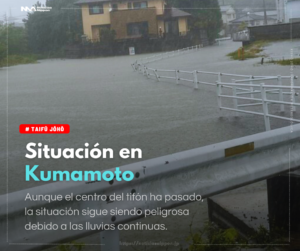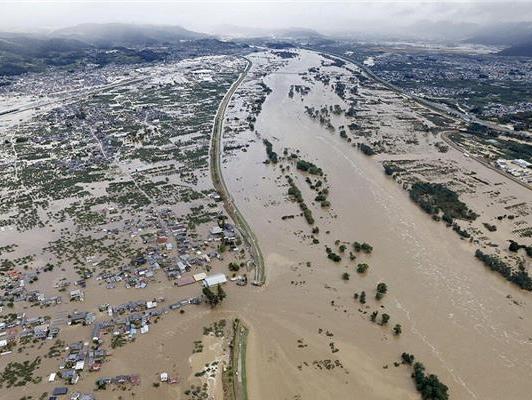Typhoon Shanshan, now downgraded to a tropical storm, continues to batter Japan with torrential rains and strong winds, causing widespread destruction and disruption across the country. The death toll has risen to five, with over 100 people reported injured. The Japan Meteorological Agency (JMA) warns that the danger is far from over, with ongoing risks of deadly floods and landslides.The storm has brought record-breaking rainfall to parts of Japan, with the town of Misato in Kyushu recording 791.5 millimeters (31 inches) of rain in just 48 hours. This extreme precipitation has led to severe flooding and landslides, with a particularly tragic incident in Aichi prefecture claiming three lives.Evacuation orders remain in effect for millions of residents, with some sources reporting up to 50 million people advised to seek shelter. However, it’s unclear how many have actually complied with these orders. Power outages continue to affect hundreds of thousands of households, with one report citing 187,010 homes without electricity.The economic impact of Shanshan has been substantial, with major companies like Toyota, Nissan, and Honda suspending operations at their factories. The transportation sector has also been severely affected, with hundreds of flights cancelled and many train, bus, and ferry services halted.As the storm moves towards central and eastern Japan, including Tokyo, authorities are urging continued vigilance. Yoshimasa Hayashi, a government spokesperson, emphasized the ongoing threat, stating, ‘The situation is still severe, and we urge residents to take necessary precautions to ensure their safety’.The frequency and intensity of such storms in Japan have been linked to climate change, with a recent study suggesting that typhoons are forming closer to coastlines, intensifying more rapidly, and lasting longer over land. This trend underscores the need for enhanced disaster preparedness and mitigation strategies in the face of evolving climate threats.
Key points
- Typhoon Shanshan, now a tropical storm, has caused five deaths and over 100 injuries in Japan.
- Record-breaking rainfall of 791.
- Millions remain under evacuation orders, with ongoing risks of floods and landslides.
- Major companies and transportation services have suspended operations due to the storm.
- The storm’s intensity is linked to climate change, highlighting the need for enhanced disaster preparedness.
5mm in 48 hours was recorded in Misato, Kyushu.
Contradictions👾There are varying reports on the number of people under evacuation orders, ranging from 4 million to 50 million.
👾The exact number of injuries varies across reports, with figures ranging from 78 to over 100.



